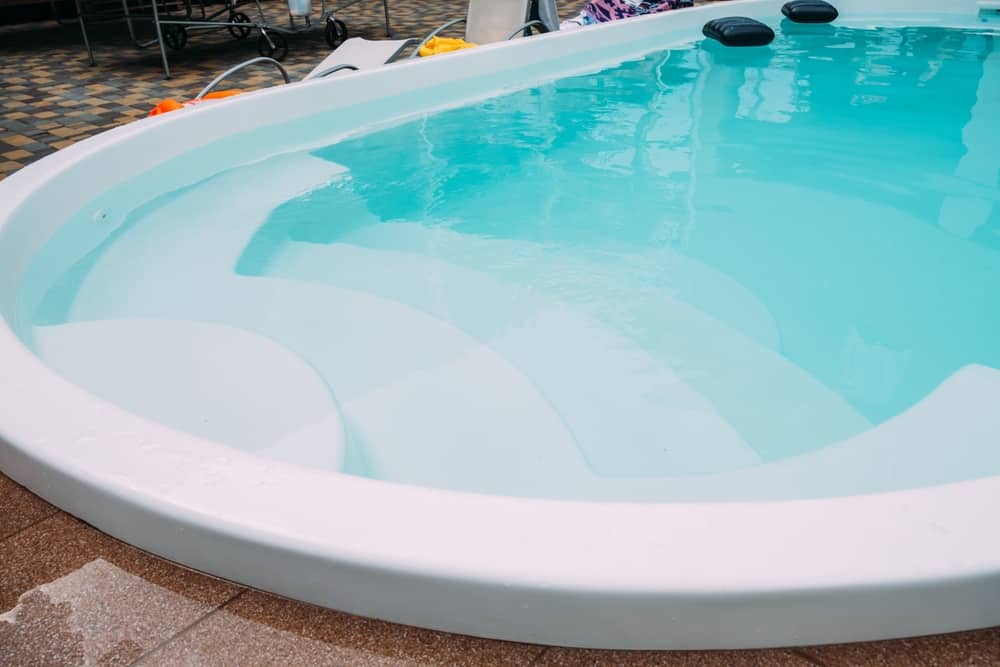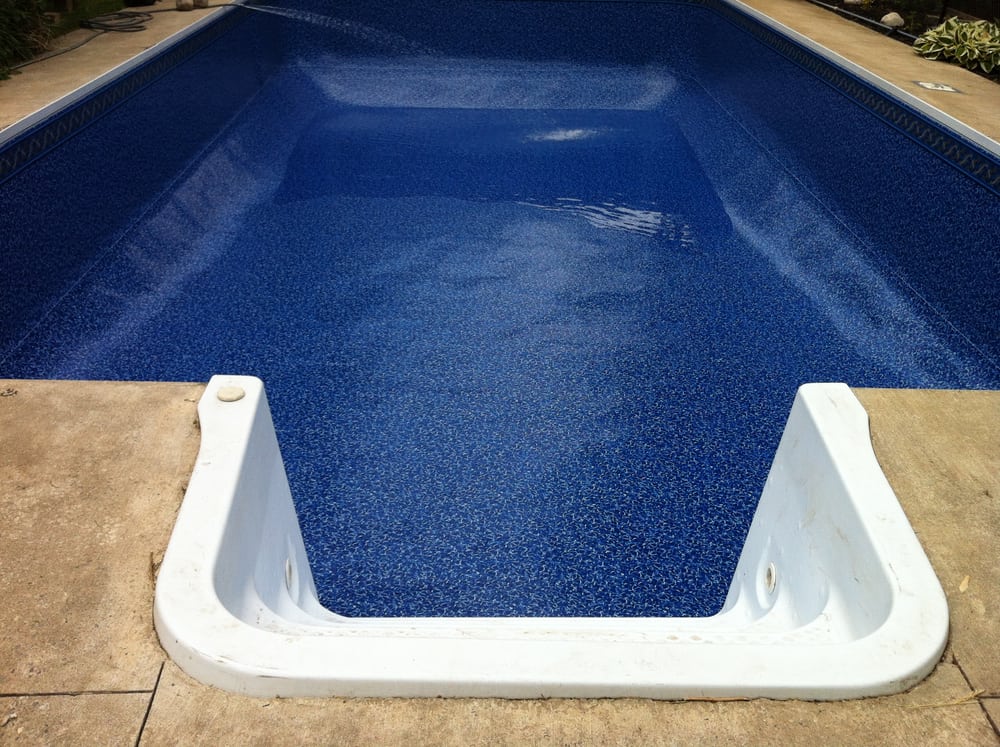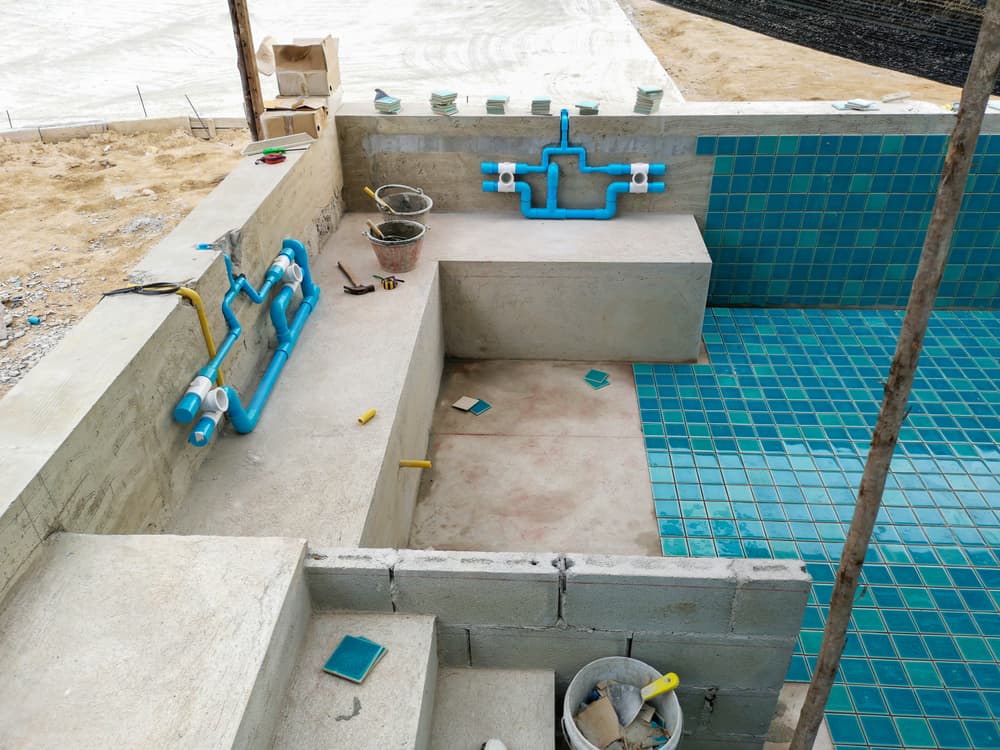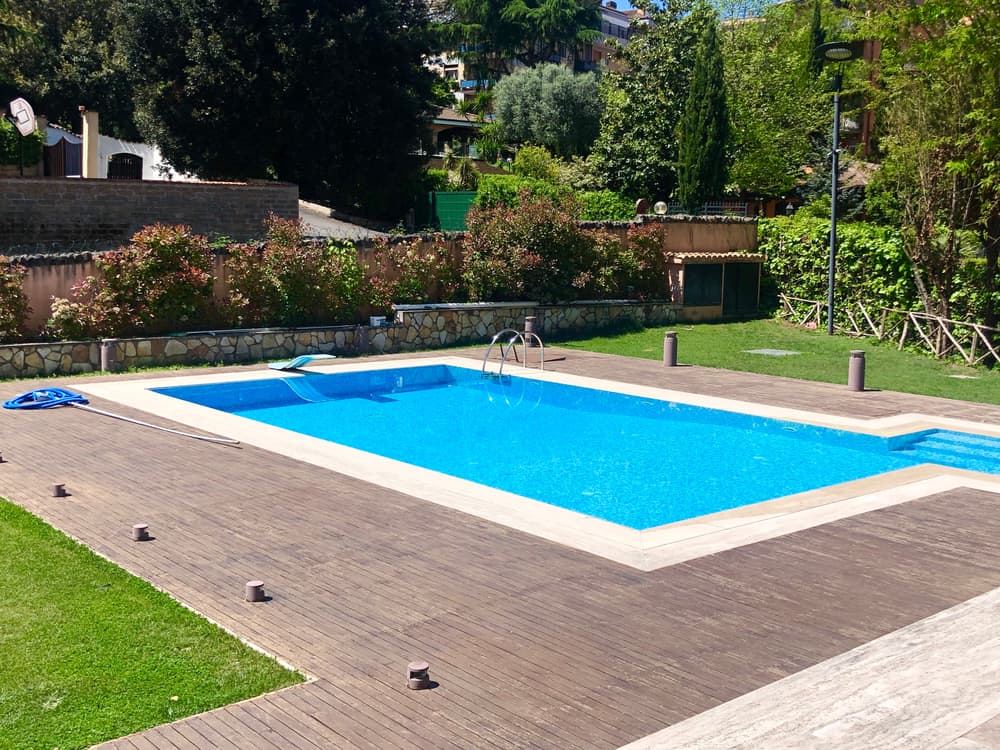Once you decide to beautify your backyard with a pool, you will see how hard it is to find relevant information about vinyl liner vs. fiberglass vs. concrete pool. It is a problem when you don’t know anything about different materials used for pools but need to make a decision.
For a start, you should learn about materials that best fit your needs, budget, and space you have at your disposal. Additionally, it is essential to determine various materials’ features, particularly their durability, installation time, maintenance level, and lifetime costs. Before purchasing, let’s look at the most relevant facts you need to have on your mind.
Table of Contents
Swimming Pools
Experts estimate that homeowners installed over 300,000 new swimming pools in the US in 2020, making a 20% growth compared to previous years. You can recognize three primary categories, including:
- In-ground pools
- Above-ground pools
- Other models
In most cases, people pick out a pool made of three material options available on the market. Let’s compare them.
Fiberglass Swimming Pools
If you want a pre-assembled swimming pool molded into different factory-designed sizes and shapes, the one made of fiberglass is ideal for you. It comes with the pool frame, ledges, and built-in ladders, making it an easy-to-install option.
Features
Initial and long-term expenses
A fiberglass swimming pool will cost you about $45,000 to $85,000, but you need to set aside about $4,000 over ten years for necessary repairs and maintenance.
Size
Fiberglass pools come in three sizes:
- Large – 16 by 35 feet (5 x 10.7 m)
- Medium – 14 by 30 feet (4.3 x 9 m)
- Small – 12 by 25 feet (3.7 x 7.6 m)
Shape
Pools made of this material are available in a few shape options, including:
- Kidney-shaped fiberglass pools
- Rectangular-shaped fiberglass pools
- Roman-inspired rectangular-shaped fiberglass pools with arched ends
- Free-form fiberglass pools
Installation
You should spend less than a month installing this pool type in most cases. Shell installation lasts about two days, but you need time to finish the necessary construction and decking.
Maintenance
Fiberglass has a beautiful non-abrasive surface impervious to corrosion, making them compatible with salt systems. Pools made of this material are durable and require only basic cleaning.
Pros
- Fiberglass pool comes with numerous customizable add-ons, like waterfalls, bubblers, LED lights, deck jets, inlaid tiles, and tanning ledges
- Installation is quick and effortless
- This material requires only a basic maintenance
Cons
- This option comes in limited pool size and shape
- The customization level is low
- It is never wider than 16 feet (5 m)
- It is necessary to resurface it after a while
- High initial price
Vinyl Swimming Pools
About 25% of all swimming pools installed in American homes are in this group, thanks to their convenience, effortless installation, and low maintenance.
Features
Initial and long-term expenses
An average vinyl swimming pool is less expensive than one made of fiberglass and typically costs about $35,000 to $50,000. However, long-term costs are significantly higher for this pool model, and you should pay approximately $11,500 during the next ten years.
Size
You can purchase a vinyl pool in several sizes, such as:
- 14 by 28 feet (4.3 x 8.5 m)
- 16 by 32 feet (5 x 9.7 m)
- 16 by 36 feet (5 x 11 m)
- 18 by 36 feet (5.5 x 11 m)
- 20 by 40 feet (6 x 12 m)
Shape
It is possible to find vinyl pools in various shape options, including:
- L-shaped vinyl pools
- Kidney-shaped vinyl pools
- Rectangular-shaped vinyl pools
- Free-form vinyl pools
Installation
A vinyl liner pool is a construction of a row of steel or polymer walls inside the hole dug in the ground. Then, you need to add a thin inner vinyl lining that holds the water. Since you need to plan the entire process carefully, it will last about six to eight weeks.
Maintenance
The non-abrasive and non-porous vinyl liner surface is smooth to the touch and inhibits algae growth. That makes regular cleaning with a soft brush quick and effortless. Adequate maintenance combined with routine liner change makes this pool type last a lifetime.
Pros
- This soft-textured material is compatible with salt water
- You can order a custom pool’s size and shape
- The non-abrasive vinyl surface is not prone to algae growth fostering, making it easy to maintain
- Installation is quick and effortless so that you can finish it yourself as a DIY project
- This pool has low initial and lifetime prices
Cons
- Prone to damage, and you need to replace the liner every 5 to 10 years
- This pool’s lifetime costs and depreciation are high
- Its resale value is low
- You can get only a limited warranty for pools made of this material
Concrete Swimming Pools
The best thing with concrete swimming pools is the possibility to create them in any design, size, and depth you want. They add value to your property when keeping it well-maintained.
Their primary downside is the necessity of resurfacing and renovation every 5 to 10 years, making them an expensive option in the long run.
Features
Initial and long-term expenses
Swimming pools made of concrete are expensive, and you need to set aside about $50,000 to $100,000 for a chosen model and installation. Plus, you need to count on an additional $27,500 within a decade on behalf of long-term expenses.
Size and shape
Swimming pools made of concrete come with a high customization level. Therefore, you can create a pool according to your idea without depth, size, and shape limitations. For instance, you can make it in a traditional form or create a guitar- or heart-shaped pool.
Installation
Concrete pool installation is expensive and time-consuming. It is necessary to dig a hole, install a rebar on its bottom and all sides, and add plumbing before pouring concrete into molds around the rebar. Finally, you need to cover walls with gunite, plaster, pebble, or tiles, making this pool durable.
Maintenance
Concrete pools have rough abrasive bottoms and sides, so their maintenance can be hard and long-term. It is almost impossible to clean your swimming pool without harsh chemicals to prevent algae growth on the water surface.
Pros
- It is an aesthetically superior option
- You can choose a pool depth, size, and shape according to your wishes
- It is possible to create edges, tanning ledges, and beach entries as desired
- It provides more flexibility in design and features
- This pool has an excellent resale value
Cons
- Concrete has a rough surface
- This pool requires regular maintenance and chemicals for cleaning
- Installation time is long
- This pool’s initial and lifetime costs are high, plus it requires occasional resurfacing
Vinyl Liner vs. Fiberglass vs. Concrete Pool
If you are interested in investing in a vinyl liner, fiberglass, or concrete pool, you should compare their features and determine the best option available.
Vinyl liner vs. fiberglass vs. concrete pool |
|||
| Feature | Vinyl liner pool | Fiberglass pool | Concrete pool |
| Durability | Good | Very good | The best |
| Color | Good | Very good | The best |
| Size and shape | Very good | Good | The best |
| Feel to touch | Very good | The best | Good |
| Water chemistry | Very good | The best | Good |
| Installation time | 4 to 8 weeks | 4 weeks | 2 to 6 months |
| Maintenance | Relatively low with routine liner change | Low | Complicated |
| Price | $35,000 to $45,000 | $30,000 to $85,000 | $50,000 to $100,000 |
| Long-term costs in ten years | $11,500 | $4,000 | $27,500 |
| Warranty | Ambiguous warranty clauses | 20 years | 1 to 5 years |
Shapes and sizes
Vinyl liner – A vinyl liner pool allows the size and shapes flexibility, but the options are still limited.
Fiberglass – This ready-made model comes from a mold so that you can find it in only a few specific sizes and shapes.
Concrete – Thanks to incredible customizability, you can make a concrete pool in any possible size and shape.
Winner – Concrete!
Installation
Vinyl liner – Relatively easy to install in 4 to 8 weeks.
Fiberglass – Easy to install in one to four weeks.
Concrete – Complicated installation that lasts two to six months.
Winner – Fiberglass!
Colors and finishes
Vinyl liner – A vinyl liner is a finish that comes in limited color options.
Fiberglass – Its gel-coating comes in various shades of white, blue, and grey.
Concrete – This material allows the widest finish color range.
Winner – Concrete!
Durability
Vinyl liner – Liners last approximately 5 to 10 years.
Fiberglass – A correctly applied Gelcoat can last forever without refinishing.
Concrete – This pool will last for decades while regularly maintained and resurfaced every ten years.
Winner – Fiberglass!
Customization
Vinyl liner – Customizing this pool type is possible but limited.
Fiberglass – It can come with a tanning ledge, extended entry, underwater lights, and water features.
Concrete – Since you build this pool from scratch, you can add water walls, scuppers, and fountains.
Winner – Draw.
Maintenance
Vinyl liner – You need specially formulated cleaning solutions to keep this pool type clean.
Fiberglass – Extra-low maintenance.
Concrete – This porous material requires regular vigorous brushing and washing with acid every five years.
Winner – Fiberglass!
Cost
Vinyl liner – The least expensive.
Fiberglass – Affordable.
Concrete – The most expensive.
Winner – Vinyl liner!
Summary
It can be tricky to determine the best option between vinyl liner vs. fiberglass vs. concrete pool. It is crucial to decide on the primary characteristics of each material before installation. Remember that your final decision should depend on your wishes, the space in your yard, and the budget you have at your disposal.



